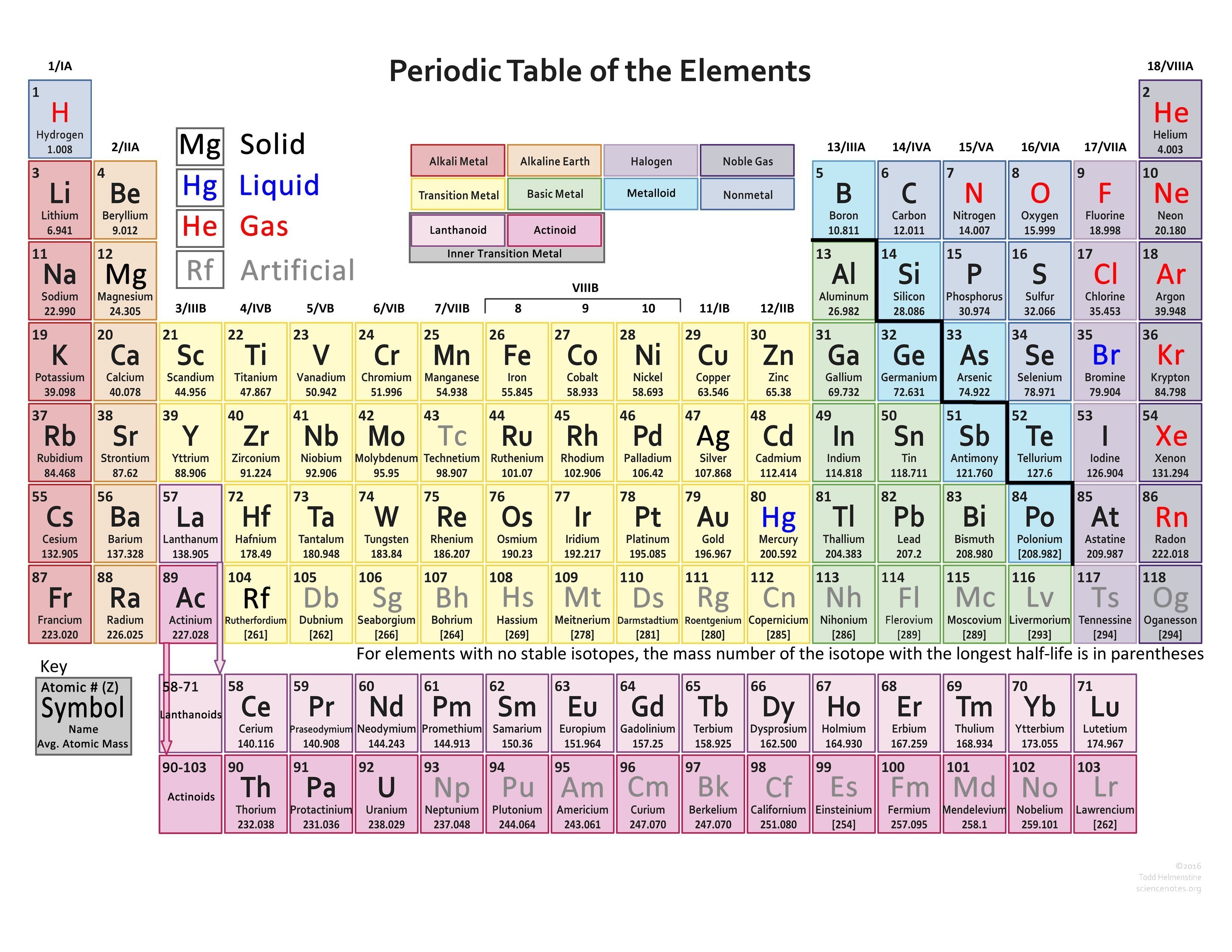
Neutron number plus atomic number equals atomic mass number: N+Z=A. The total number of neutrons in the nucleus of an atom is called the neutron number of the atom and is given the symbol N. Mass numbers of typical isotopes of Fluorine are 19. Neutron Number and Mass Number of Fluorine This fact has key implications for the building up of the periodic table of elements. The ordering of the electrons in the ground state of multielectron atoms, starts with the lowest energy state (ground state) and moves progressively from there up the energy scale until each of the atom’s electrons has been assigned a unique set of quantum numbers. It is the Pauli exclusion principle that requires the electrons in an atom to occupy different energy levels instead of them all condensing in the ground state.

In the periodic table, the elements are listed in order of increasing atomic number Z. The number of electrons in each element’s electron shells, particularly the outermost valence shell, is the primary factor in determining its chemical bonding behavior. The configuration of these electrons follows from the principles of quantum mechanics. The chemical properties of the atom are determined by the number of protons, in fact, by number and arrangement of electrons. See also: Atomic Number – Does it conserve in a nuclear reaction? Atomic Number and Chemical PropertiesĮvery solid, liquid, gas, and plasma is composed of neutral or ionized atoms. It is the electrons that are responsible for the chemical bavavior of atoms, and which identify the various chemical elements. In a neutral atom there are as many electrons as protons moving about nucleus. The total electrical charge of the nucleus is therefore +Ze, where e (elementary charge) equals to 1,602 x 10 -19 coulombs.

Total number of protons in the nucleus is called the atomic number of the atom and is given the symbol Z. The nucleus is composed of protons and neutrons.

The atom consist of a small but massive nucleus surrounded by a cloud of rapidly moving electrons. K) - Thermal Conductivity 0.0279 Specific Heat 0.82 Heat of Fusion 0.2552 Heat of Vaporization 3.2698 Atomic Number of Fluorineįluorine is a chemical element with atomic number 9 which means there are 9 protons and 9 electrons in the atomic structure.Fluorine – Properties Element Fluorine Atomic Number 9 Symbol F Element Category Halogen Phase at STP Gas Atomic Mass 18.9984 Density at STP 1.696 Electron Configuration 2s2 2p5 Possible Oxidation States -1 Electron Affinity 328 Electronegativity 3.98 1st Ionization Energy 17.4228 Year of Discovery 1886 Discoverer Moissan, Henri Thermal properties Melting Point -219.8 Boiling Point -188.1 Thermal Expansion µm/(m


 0 kommentar(er)
0 kommentar(er)
